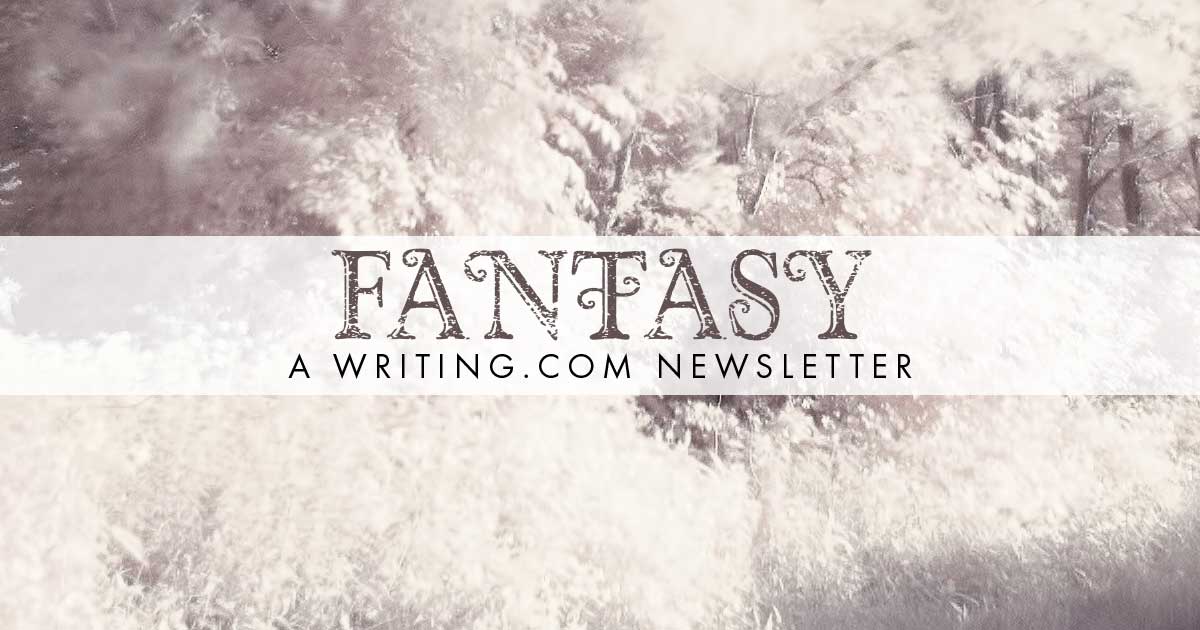This week: Snowflakes Edited by: Waltz in the Lonesome October  
More Newsletters By This Editor 
![Table of Contents [#401437]
Table of Contents](https://shop.Writing.Com/main/trans.gif) ![Table of Contents [#401437]
Table of Contents Table of Contents](/main/images/action/display/ver/1709303267/item_id/401437.png)
1. About this Newsletter
2. A Word from our Sponsor
3. Letter from the Editor
4. Editor's Picks
5. A Word from Writing.Com
6. Ask & Answer
7. Removal instructions
![About This Newsletter [#401439]
About This Newsletter](https://shop.Writing.Com/main/trans.gif) ![About This Newsletter [#401439]
About This Newsletter About This Newsletter](https://www.writing.com/main/images/action/display/ver/1709303676/item_id/401439.png)
“Sorry, but your parts are worth a mint." She drew her gun on the android. "Every snowflake is special, until you need to make a snowball.”
― T.R. Darling
Every avalanche begins with the movement of a single snowflake, and my hope is to move a snowflake.
― Thomas Frey
Today for show and tell, I've brought a tiny miracle of nature: a single snowflake! I think we might all learn a lesson from how this utterly unique and exquisite crystal turns into an ordinary, boring molecule of water just like every other one when you bring it into the classroom.
And now, while the analogy sinks in, I will be leaving you drips and going outside...
― Bill Watterson, Calvin & Hobbes |
![Letter from the editor [#401442]
Letter from the editor](https://shop.Writing.Com/main/trans.gif) ![Letter from the editor [#401442]
Letter from the editor Letter from the editor](https://www.writing.com/main/images/action/display/ver/1709303784/item_id/401442.png)
With apologies to the folks in the wrong hemisphere for this, I'm going to talk about snowflakes today.
And no, I won't be talking about people who get their feelings hurt easily; I mean actual, literal snowflakes that fall from the sky in (usually) winter.
When I was a kid, I heard what I think we've all heard: "No two snowflakes are alike."
Being the annoyingly inquisitive sort of kid, I wondered how they knew that. There is an enormous number of snowflakes, and they couldn't have examined each one - could they?
I didn't get a satisfactory answer until I learned more about statistics and probability. As it turns out, though, as is usually the case, that bit of early childhood wisdom might not actually be true, or at least it's an oversimplification -- depending on how you define a snowflake, and one's threshold for "alike."
This article  explains what I'm talking about in more detail. explains what I'm talking about in more detail.
The science behind how snowflakes form is fascinating if you're into that sort of thing, and the above link touches on it. But I think one important thing to note is that many snowflakes don't exhibit the fractal sixfold symmetry that we think of when we think "snowflake." With certain conditions of temperature and humidity, crystals form spikes instead of the classic shape, and they can even be a hybrid of those two basic forms.
"But Waltz, what does this have to do with Fantasy?" Good question. One thing I can say is that everything has the potential to be related to Fantasy writing. But more, snow is no stranger to the genre; for instance, the wintry lands of Narnia or the more recent stories well-known for the phrase "Winter is coming." There was that popular cold-themed movie series from Disney recently. And what are most winter holiday stories if not fantasy?
But I also want to talk about a different aspect, specifically concerning fantasy (or science fiction) writing: Other worlds can possess weather patterns based on liquids other than water. This is not just speculation; Saturn's moon Titan is known to have clouds, rain, and possibly even something like snow -- but at far below the freezing point of water, all this weather is based on other molecules.
As the shape of a snowflake is a result of the unique molecular structure of water, though, any other freezing precipitation made up of different compounds will necessarily sport different crystalline forms -- if they can even form some sort of snowflake analogue.
What these are, if indeed they occur, well, that's going to be up to you if you write in such a setting. |
![Editor's Picks [#401445]
Editor's Picks](https://shop.Writing.Com/main/trans.gif) ![Editor's Picks [#401445]
Editor's Picks Editor's Picks](https://www.writing.com/main/images/action/display/ver/1709303830/item_id/401445.png)
Some wintry fantasy for you:
|
![Word From Writing.Com [#401447]
Word from Writing.Com](https://shop.Writing.Com/main/trans.gif) ![Word From Writing.Com [#401447]
Word from Writing.Com Word from Writing.Com](https://www.writing.com/main/images/action/display/ver/1709303874/item_id/401447.png)
Have an opinion on what you've read here today? Then send the Editor feedback! Find an item that you think would be perfect for showcasing here? Submit it for consideration in the newsletter!
https://www.Writing.Com/go/nl_form
![Ask & Answer [#401448]
Ask & Answer](https://shop.Writing.Com/main/trans.gif) ![Ask & Answer [#401448]
Ask & Answer Ask & Answer](https://www.writing.com/main/images/action/display/ver/1709303902/item_id/401448.png)
![Unsubscribe [#401452]
Removal Instructions](https://shop.Writing.Com/main/trans.gif) ![Unsubscribe [#401452]
Removal Instructions Removal Instructions](https://www.writing.com/main/images/action/display/ver/1709303960/item_id/401452.png)
To stop receiving this newsletter, click here for your newsletter subscription list. Simply uncheck the box next to any newsletter(s) you wish to cancel and then click to "Submit Changes". You can edit your subscriptions at any time.
|
